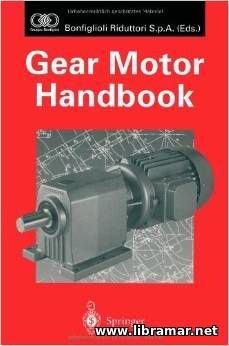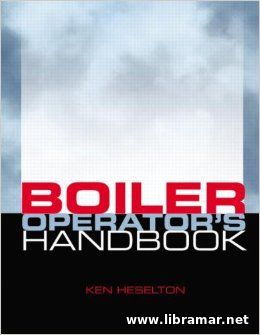 While the publication was originally written with the automotive industry in mind, the content will also be useful to the engineers engaged in the marine industry. The introduction is followed with the first chapter dealing with the engine supervision methods, troubleshooting and fault finding, and different methods that are used for diagnosis and belong to the general field of condition monitoring of the technical process.
The idea is to give a correct indication of any undesired states requiring action in order to avoid any accidents or damages. The second chapter is entirely devoted to the diagnosis works on the internal combustion engines, while the third one is dealing with the electric drives, actuators and motors. The fourth chapter addresses the fault-tolerant systems together with their basic components.
Finally, the appendix to the main part of the publication contains additional information about the models and functions, properties for the systems, as well as the associated states and signals. The publication will be of practical use for the people involved in the technical maintenance and repair of the internal combustion engines as part of their duties.
 The present volume was released to provide some introduction to the essential approaches and basic technical principles of the nuclear power design as applied to the maritime industry, covering such important areas as the design of the reactors together with the associated cooling systems, safety features and arrangements, and many other critical aspects.
The author of the book has provided a comprehensive and thorough review of the fundamental theory of the nuclear-powered facilities, with the due attention paid to the recent advances in the field.in fact, the entire lifespan has been dealt with, starting from the design stage and up to the decommissioning of the equipment after the successful operation period.
In addition, the author has explored the different conditions such as the situation where you do not possess enough room for the deployment of the equipment, the conditions tending to change rapidly, etc. the readers are provided with the extensive info making this title a truly valuable reference source for both industry professionals and graduate students who will all benefit from the content. Particularly recommended to the marine engineers interested in the prospective technological solutions related to the ship powering.
 The pumps, including centrifugal type pumps, and their systems are widely presented in ship hull systems. What it actually means is that every single industry professional dealing with the pump design must possess a very good theoretical knowledge and fully understanding of their working principles. But note that is not enough, and they shall also be familiar with all practical applications of pumps together with the main engineering correlations for flow phenomena.
This volume is mainly intended to be used by pump designers and ship crew members involved in day-to-day operation/maintenance of various pumping arrangements. The chapters of this publication cover such interesting and important topics as various pump types and their performance data, fluid dynamic principles, physical concepts and pump hydraulics, various performance characteristics, part-load operation, cavitation and suction capability, design of the various hydraulic components, issues connected with the vibration and noise, hydraulic forces, pump operation, general characteristics of turbine operation, selection of materials exposed to high flow velocities, medium influence, selection of pump and associated quality considerations, and pump testing. Definitely useful publication for the crew members as well as people willing to get some basic knowledge of pumping technology and systems.
 One of the main intentions that were declared by the authors of the present volume was to work out a book that could serve as a valuable contribution to the ongoing development in the field of transmitting power and possible applications of the power transmission. It was aimed to all people having regular technical dealings with subject machinery, starting from students and to the professional engineers.
The book starts with some quite basic introductory info, which is then followed by several informative chapters dealing with the dynamics of solids, material strength and stresses involved, mechanical gears together with their geometry and measuring, associated calculations, shafts, fits that are there between the shaft and the hub, bearings, lubrication process and lubricants, housings, various standard gear units, noise and vibration, thermal power, the fabrication process, various technical applications, hydraulic motors, variators, applicable ISO standard and definitions/standards that usually apply to the electric machines, electric DC machine and their control, converters, three-phase AC electric machines and associated signal flow graphs, synchronous machines, inverter drives, means of control of rotating field electric machines - basic technical considerations, permanent magnet machines, outline of TQM, i.e. Total Quality Management, the QC (Quality Control) viewpoint, QA (Quality Assurance), main QC (Quality Control) activities and other very important and relevant topics.
 Have a look into one of the most comprehensive volumes on internal combustion engines available today. The book may serve as an excellent introductory text for the beginners; however, the content will be equally interesting to the specialists willing to refresh their knowledge. This third edition of the valuable reference source features lot of newly included material.
The text of the book is informative and thorough containing detailed descriptions of the theory together with the practical overview of the subject. The readers may easily starts at near-zero point and move to the operation of the engines. The explanations provided in the pages of this text-book are easy enough to understand even to the people with not too much of experience; this is why it gained so much popularity even among non-engineers.
The book will be of particular interest to the people who want to understand all why's of the internal combustion engines since it gives complete and detailed information on the theory of engine operation. Most of the theoretical information normally required by the engine enthusiasts has been provided. The content is duly updated and reflects all latest developments in the design and construction of the engines.
 This handbook has been specifically designed and published for the boiler operators having some basic knowledge and professional experience, but still willing to learn more to get his performance optimized. The material contained in this publication is presented very clearly, that is why this volume could be recommended to the industry workers to serve as a practical guide, especially for those who are making their first professional steps.
However, we would equally recommend this publication to the technical superintendents and managers who are interested in cost saving through reduction of the operating expenses of their facilities. The text of this handbook bases on the forty years of professional experience of the author, Ken Heselton, in operating the boiler plants, design and construction of boilers, as well as their start-up, periodical technical maintenance and retrofit. The publication contains the fundamental recommendations to the operators and managers of both small and large plants.
According to the reviews provided by the readers of the book, it was definitely prepared by someone who has actually been in the trenches and who knows and understands what exactly it means to run a boiler plant, to maintain all associated equipment and is fully aware of the relevant operational procedures.
 It goes without saying that the well maintained ship will have all of the onboard equipment and systems in order and sufficient for all the voyages that the subject vessel is planning to undertake. The engineering items of today are indeed reliable and in most cases they have the failsafe devices incorporated into their construction. In addition to that, there can be some non-serviceable components that shall be paid particular attention at all times.
The experienced and professional engineers are expected to duly meet all of the technical requirements imposed by the manufacturers of the particular shipboard equipment, while the national regulations may require the equipment to be installed by the authorized technicians – this particularly relates to the electrical systems, LPG handling, HVAC and refrigerating systems etc. the engineers are therefore required to possess a good understanding of the mathematics and science, not limited to the essential calculations.
They should be able to assess how the materials cab be changed under the influence of the external heat and pressure, and to know the effect of the forces acting upon the structures. The present book will be of great practical interest to the marine engineers and any other people engaged in the maintenance and servicing of the ship auxiliary equipment, and also a perfect one for the training purposes.
 This is one of the best books on marine engineering available today. With its contents developed by the team of prominent experts in the field of marine engineering, the volume is intended to provide the practicing engineers with all information they would need to perform their job duties in the best possible way. Though the publication contains theoretical information as the basis, the authors concentrated mainly on the practical aspects of operation and maintenance of the shipboard machinery. We are quite sure that the marine engineers will find everything in the pages of this brilliant book. The authors have managed to cover all topics in a single volume.
The coverage includes marine boilers and steam turbines, marine diesel engines together with the fuel oil they use and its treatment, electrical machines and electrical power systems commonly installed on board, various automation and control systems, ship refrigerating plants, pumping systems, steering gear, propeller and shafting arrangements; in addition to that, the precautions to be taken to minimize the fire hazard, have also been addressed. This is a definitely recommended book on the shelf of any machinery room.
« 1 2 3 4 5 6 ... 19 20 » |







